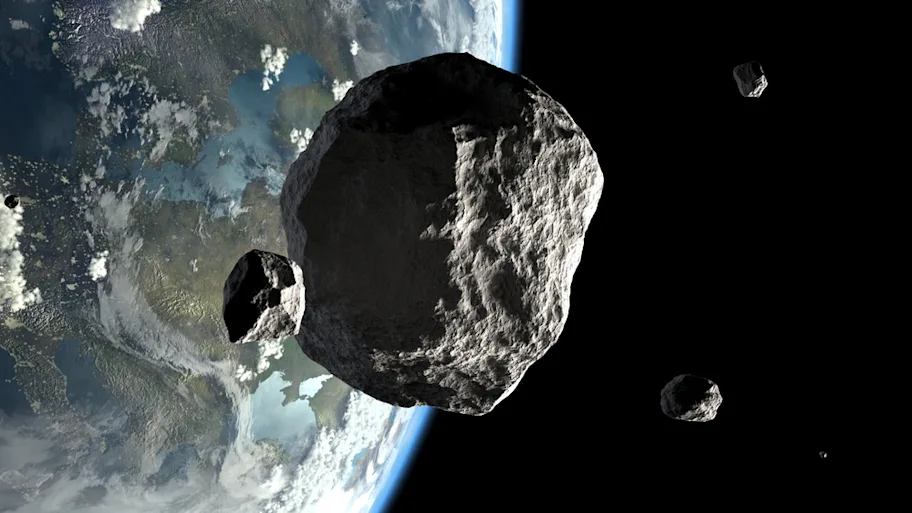
- Science news
- Frontiers news
- Chemistry Week: Atoms, Rocks and the Solar System
Chemistry Week: Atoms, Rocks and the Solar System
Welcome to Chemistry Week 2016. To celebrate this year’s event called “Solving Mysteries Through Chemistry” we had great pleasure to visit and interview a geochemist with a very special interest. A geochemist who analyzes stones that fell from the sky, meteorites! We were very curious about what information they “code” and how it can be revealed. This curiosity led us to the Museum of Natural History in Geneva, Switzerland to meet Dr. Edwin Gnos. We asked him a series of questions to understand what is hidden inside a rock (no matter whether it originates from the Earth or outer space) and how this information is useful. Read on to find out more about what we learned.

First of all we wanted to know what a meteorite is and how to distinguish it from other stones that can be found on the Earth. A meteorite is a piece of another planet, asteroid or meteoroid, however most meteorites come from the asteroid belt situated between Jupiter and Mars, that fell to Earth. Meteorites hit the Earth’s atmosphere at very high speeds, usually up to 100,000 km/h (much faster than bullets which travel at ~30,000 km/h). A meteorite flying through Earth’s atmosphere is subject to friction, pressure, and interactions with the atmospheric gases, which heat it up to even 2000°C. This causes its surface to melt and vaporize layer by layer, diminishing its size. At this stage the meteorite can be seen in the sky as a fireball. Then, if it is big enough, it falls into pieces. The heaviest piece flies the furthest and the lighter ones falls away. If the resulting object is big enough, it creates so called impact crater (or few of them).
The melting process influences not only the size but also the shape of a meteorite leaving it roundish and with a black layer on its surface. Although if the meteorite is cut, it will look like a normal stone inside. Well, most of them will, more specifically 95%.

About 4% of meteorites are metallic and these are probably what you will see when visiting museums.

Even less of them are stony-iron with mineral granules surrounded by metal. These are very rare and comprise only 1% of all objects.

So, how do you find them on Earth? Most of the meteorites are found after they were seen in the sky as fireballs, thus tracking their trajectory in the sky we can predict where it is likely that they have fallen. Although this is not always possible. On March 15th 2015 there was a fireball seen in the skies over Germany, Switzerland and Austria and there are many videos documenting this event. Nevertheless, no one has found a piece of the meteorite, as it is likely that it crashed in high mountains or in the woods. Since mountains or forest are not quite the best place to spot a meteorite, where is it then? To search for research material Dr. Gnos and his team visit the Arabic Peninsula. The desert is a good place to look for meteorites for several reasons. First of all, sand is light colored so it is easy to spot a black stone and second of all desert land is generally quite flat making the search even easier.

Now that we know where to find and how to recognize a meteorite, one may wonder what information scientists can obtain by analyzing these objects. To understand this we must first consider atoms. As you probably know, all the matter surrounding us is made from atoms. A substance which is made of only one type of atom is called an element. There are 90 naturally occurring elements. Every element has different properties which is reflected on the atomic scale. Atoms can be bigger or smaller, heavier or lighter, and have diverse electronic structure (see the picture below). Meteorites, like everything else, are built with atoms of different kinds. Using sophisticated equipment and performing complex analysis geochemists can determine meteorite composition. This means that they can precisely say what and how much of each type of atom is present in the stone. This process is called elemental analysis and there are multiple techniques applied.

One of these techniques is X-ray fluorescence, which is based on exposition of the melted piece of meteorite (a sample) to the shortwave X-rays. Since radiation is a form of energy, the atoms in the stone absorb this energy and enter an excited state (a state of higher energy). Nothing in this world, including ourselves (when you feel full of energy you want to do something to get rid of it, right?), likes to stay in this state long and thus the excited atoms emit this energy in a form of a wave that is detected and measured. Depending on the atom size the energy absorbed and then emitted is different. Waves of the same length belong to atoms of the same kind and are collected all together to quantify how many of them occur in the sample. Having these two pieces of information Dr. Gnos can determine the composition of the meteorite, but why is it important to know the composition?
On the basis of meteorite composition, it is possible to define where the rock has come from, is it Mars, the Moon or asteroid. Really? Well, this can only be done if we already know how the certain body is built. Otherwise we can track back the way of falling meteorite in the sky (if the event was filmed) stating with decent proximity where an object come from. If these details are not known, geochemists can only group a meteorite with other meteorites which have similar composition and assume that they come from the same body, but they cannot determine whether it still exists or was destroyed.
This cannot be all we can learn from analysis of a meteorite though. What further information can we gain from meteorite composition? It is also possible to say how old the piece of cosmic rock is. Do you also, like we do, wonder how? The answer is hidden in another feature of atoms – atoms can occur in different forms called isotopes. Isotopes vary from one another by weight. Some isotopes are stable whereas others undergo decay to form more stable forms. The latter type of isotopes are called radioactive isotopes. One of the most known radioactive element is uranium. It has two radioactive isotopes Uranium-235 and Uranium-238 (the number indicates the mass). The radioactive decay of these produces Lead-207 or Lead-206 respectively. Even though the process is spontaneous, it takes a certain time and therefore it can serve as a clock. Time in which radioactive decay is measured is called a half-life, and it is time needed to consume a half of the radioactive atoms (of the same element) in the sample and as you will see it is veeeery slooow. Uranium-235’s half-life is about 700 million years, and Uranium-238’s half-life is about 4.5 billion years. Counting the quantity of uranium’s radioactive isotopes and two resulting isotopes of lead in the sample and then comparing these two values geochemists can precisely state how old the stone is.
The above is done using Mass Spectrometry. How exactly is this done? At the beginning all atoms are ionized (an ion is an atom with some electrons missing). Then they are accelerated through an electro-magnetic field which separates ions by their mass to charge ratio (m/z). At the end they are detected as signals according to their m/z. The strength of a signal can be measured giving information about the type and quantity of the particular ions and therefore substances present.
The complex information obtained from meteorite composition is used to hypothesize on how our solar system has evolved. Composition codes information on the age and formation of planets, the structure and geological processes that formed them (as well as the other objects present in the solar system). It helps us to answer questions, such as: what is the planet built with? Or is there water present? Researching meteorite composition scientists have come up with different theories regarding evolution of universe or more locally, Earth. One of such well accepted theories is that billions of years ago, so called early Earth crashed with the other small planet (the size of Mars). As a consequence, their cores combined (and this is why the Earth’s core contains much more iron that it should) and one piece separated creating our Moon (which we know is built very similarly to Earth). The early Earth’s surface (long before the collision) was hot enough to burn out all the carbon present in its crust and the rest of it has bound to its iron core. The collision of the Earth with other planet let carbon from its inside to retain on Earth’s surface allowing emergence of life on our planet, since carbon is one of the central elements on which it is built.
As you can see meteorites are “space rocks” of different origin and their analysis can tell us much about our solar system, processes that have formed the planets and other objects in the universe, its evolution and even how life on Earth emerged. Even though nowadays we can travel through space and collect samples directly from different bodies, still some objects are way too far to be reached and thus meteorites remain the most reliable (if not the only) source of information about them.






